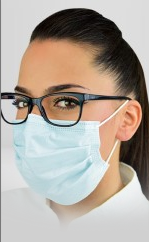Efficient Dental Air Compressor Operation with Silica Gel Dryer
Explore the seamless operation of our Dental Air Compressor with Silica Gel Dryer, ensuring a continuous supply of high-quality compressed air for your dental practice. Here's a breakdown of the process:
Air Filtration: The incoming air undergoes initial filtration (A), removing airborne dust to protect the piston and cylinder (B).
Lubrication-Free Compression: The piston travels within the cylinder (C) without lubrication, minimizing wear.
Cooling and Heating: Compressed and heated air (about 100°C) is cooled through an air-to-air exchanger (D) to approximately 5°C.
Dew Point Cooling: To reach the dew point for water vapor condensation, the air passes through a drying column (E) with a cyclone (F) and silica gel mix (I).
Moisture Removal: Residual moisture is removed in the drying column, passing through filters: sintered bronze (H), polyester (L), or replaceable antibacterial HEPA H14 filter.
Hygienic Storage: The Cattani Dental Air Compressor tank is lined with an antimicrobial surface, including silver ions, ensuring hygienic storage.
Regeneration Process: During tank filling, air enters a small tank (O) through a selective valve (N). At the end of each charge, dry air in the small tank counter-flows through the drying column, regenerating the silica gel.
This entire process occurs automatically, providing your dental practice with a reliable and efficient compressed air solution. Choose Cattani for advanced technology and impeccable hygiene in air compressor systems.

